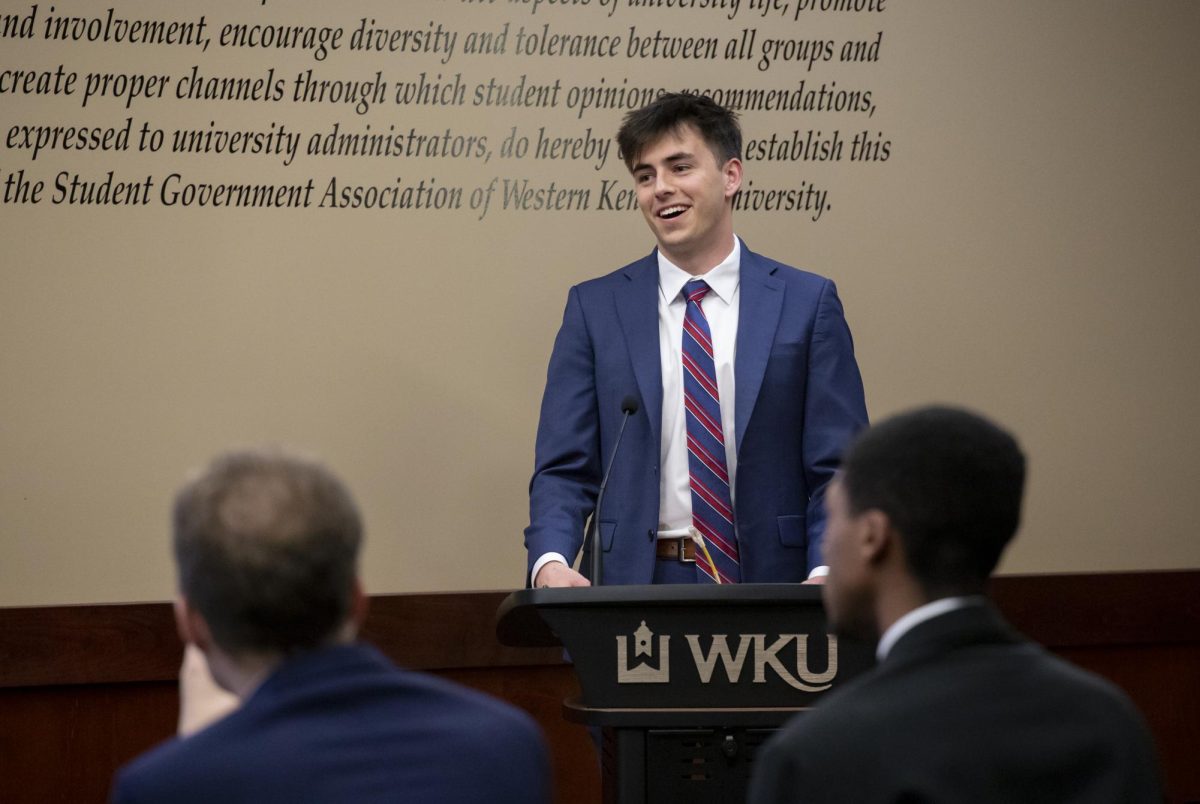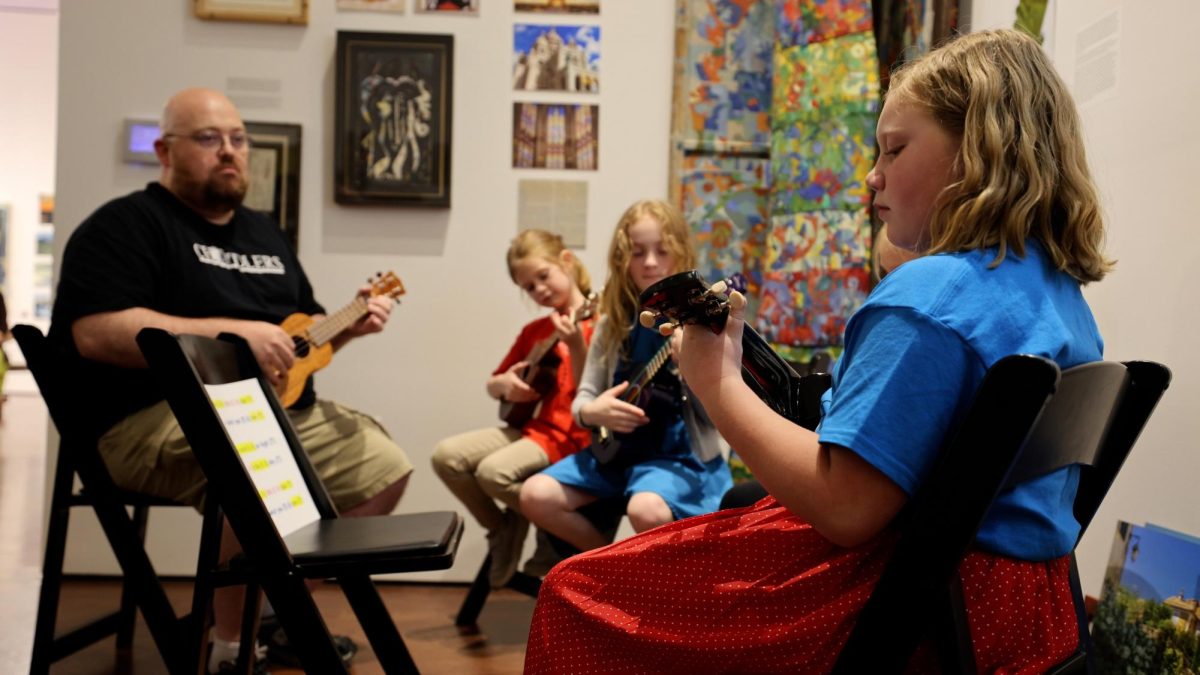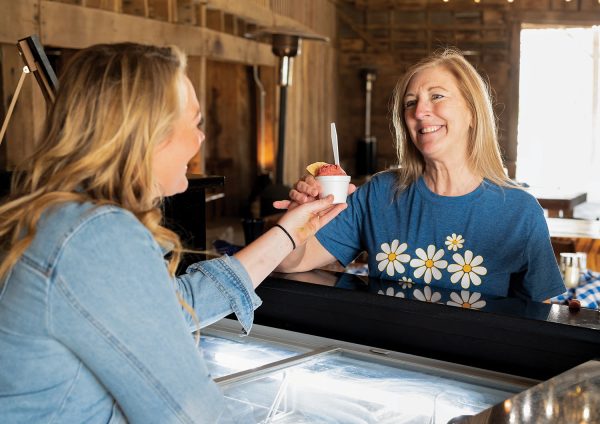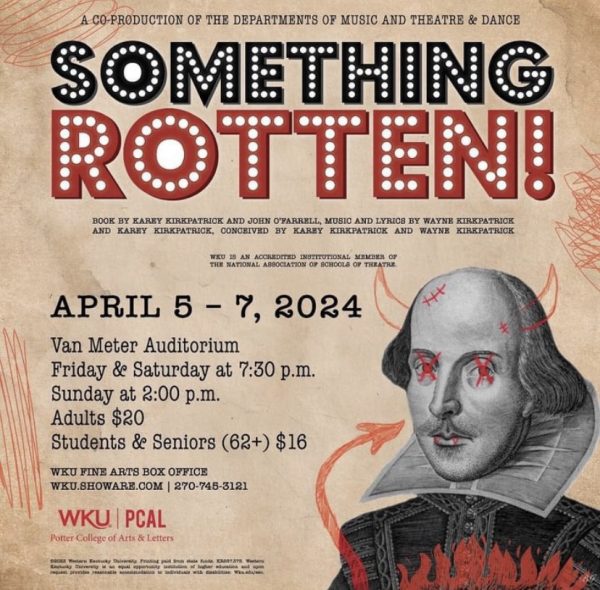Three WKU professors recently won awards for establishing the Upper Green River Biological Preserve in Hart County
April 2, 2013
Saving the planet one acre at a time is all in a day’s work for three WKU professors. In 2004, Dr. Albert Meier, Dr. Ouida Meier and Dr. Scott Grubbs formally established the Upper Green River Biological Preserve.
A place where native plants and animals are nurtured, the Upper Green is “one of the most biodiverse rivers in the nation,” A. Meier said. This helped the professors, who are co-directors of the preserve, decide to conduct research and restore the 1200 acres.
“The university didn’t have a good place to do ecological research where we had freedom,” A. Meier said.
The professors applied for and received a grant from the Kentucky Heritage Land Conservation Fund to buy the land and begin protecting species and educating the community.
Located in Hart County, two miles upriver of Mammoth Cave, the preserve boasts multiple federally protected species, including bats, shrimp and several types of mussels.
With so much land to be revived and protected, new projects are conducted every day to make the work more efficient. In his recent work on the preserve, Dr. Scott Grubbs focused on stream and river ecology.
Specifically, Grubbs studied Cladophora, an algae, and measured its importance in an ecological food web. Grubbs makes a point to get students involved in research at the preserve.
“All of my classes that involve field work involves going to the preserve,” Grubbs said.
For London senior Jacob Floyd, working on the preserve has helped him learn how to return nature to its original state as well as how to maintain farm equipment. Floyd started working on the preserve in 2011 after talking to A. Meier about looking for a job.
A biology major and an agriculture minor with knowledge of farm life, Floyd was a perfect fit for the job. Projects at the preserve for Floyd are different every day.
Between “cleaning house, chopping trees and protecting species…I probably learn something new every little project he (A. Meier) gives me,” Floyd said.
A big part of keeping the preserve is eliminating invasive species from the land and reintroducing native ones to enrich the soil. A. Meier focuses on terrestrial ecology and creates “prescribed fires” to burn the woods in order to recreate barrens (hence Barren County, Barren River).
But the preserve doesn’t just make the researchers and students happy. The co-directors get the community involved as well. Since 2010, the preserve closes for a weekend in November for a program called Wounded Warriors.
A group of 10 to 15 veterans is allowed to deer hunt on the preserve for the weekend and harvest the deer that they catch. Grubbs said that they are working to get more people involved in the preserve, including high school and middle school students.
A. Meier, Grubbs and O. Meier recently received praise for their work on the preserve. Kentucky’s Nature Preserves Commission awarded the three the annual Biological Diversity Protection Award to acknowledge the preserve and the work to restore and protect the diversity of the Upper Green River.
A. Meier said that he was “very pleased” when he received the award.
“It was presented by people I admire,” A. Meier said.
The preserve is a way for the land to thrive more naturally. It protects valuable species from extinction.
“We’re trying to put everything back where it used to be,” Floyd said.













![Students cheer for Senator at Large Jaden Marshall after being announced as the Intercultural Student Engagement Center Senator for the 24th Senate on Wednesday, April 17 in the Senate Chamber in DSU. Ive done everything in my power, Ive said it 100 times, to be for the students, Marshall said. So, not only to win, but to hear that reaction for me by the other students is just something that shows people actually care about me [and] really support me.](https://wkuherald.com/wp-content/uploads/2024/04/jadenmarshall-1200x844.jpg)




![Megan Inman of Tennessee cries after embracing Drag performer and transgender advocate Jasmine St. James at the 9th Annual WKU Housing and Residence Life Drag Show at Knicely Conference Center on April 4, 2024. “[The community] was so warm and welcoming when I came out, if it wasn’t for the queens I wouldn’t be here,” Inman said.](https://wkuherald.com/wp-content/uploads/2024/04/smith_von_drag_3-600x419.jpg)






